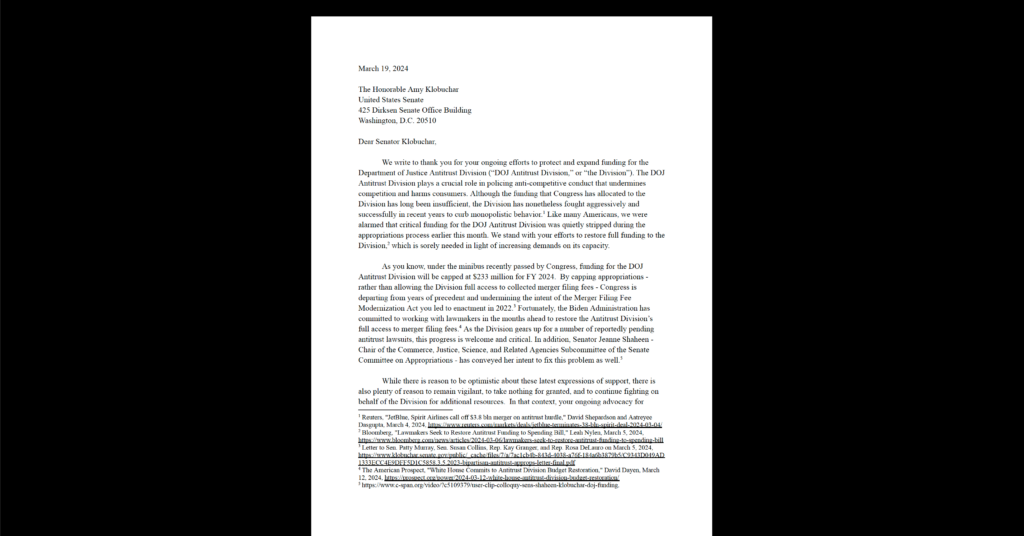Free Expression, Open Internet
CDT Comments to Copyright Office Focus on Preserving Balance and Cooperation in the DMCA
Today, the Center for Democracy & Technology, along with the R Street Institute, filed comments in response to the Copyright Office’s Notice of Inquiry regarding Section 512 of the Digital Millennium Copyright Act (DMCA). Section 512 protects the conduits, websites, cloud storage providers, and search engines from statutory damages and other liability for copyright infringement based on works posted by users so long as service providers comply with certain requirements, such as taking down infringing content or links when copyright holders send valid takedown notices. Section 512 of the DMCA and Section 230 of the Communications Act are in many ways the Magna Carta of the modern commercial Internet.
Not everyone likes the modern commercial Internet or Section 512 of the DMCA. In particular, some copyright holders are deeply frustrated by the need to send millions of takedown notices, often for the same infringing content that was the subject for an earlier notice to the same service provider. Some service providers and user advocates are similarly frustrated by the frequency with which mistaken or abusive takedown notices result in entirely lawful content being removed from websites and services. Many of the 30 questions presented in the Copyright Office’s Section 512 Study are aimed at eliciting proposals for changes to the DMCA to address both sets of concerns.
The DMCA’s fundamental balance of rights and obligations of copyright owners, service providers, and users has been massively successful and should not be altered.
A central theme of CDT and R Street’s comments is that the DMCA’s fundamental balance of rights and obligations of copyright owners, service providers, and users has been massively successful and should not be altered. In enacting the notice-and-takedown process, Congress had to weigh concerns of copyright infringement against those of free expression and innovation as it sought to foster an emerging technology that would benefit all constituencies in the copyright ecosystem. There is more infringing content on the Internet today than there was in 1998 because there is simply more Internet today than there was in 1998: more websites, more services, more content, more users, more everything. By one estimate, the number of websites has grown from 2.4 million in 1998 to 863 million today. Good job, DMCA.
The desire to eradicate infringing content from the World Wide Web is understandable but unrealistic. As CDT has long maintained, the goal of copyright enforcement should be to target truly bad actors, and for the average user to make infringing content more risky and less attractive compared to legal alternatives. That goal can be advanced without altering the structure and operation of the DMCA.
The desire to eradicate infringing content from the World Wide Web is understandable but unrealistic.
Rightsholders and service providers can advance that goal through voluntary measures and to make the notice-and-takedown process more accurate and efficient. They can also supplement that process with enforcement techniques that go beyond what the DMCA requires. CDT supports such measures so long as they bear the hallmarks of other successful multistakeholder approaches to Internet governance: openness, transparency, due process, and voluntariness. These attributes are crucial in any extrajudicial mechanism that can result in the disappearance of information and expressive content from the Internet.
Voluntary measures are in many ways an extension of the cooperation that Congress sought to infuse into the DMCA’s approach to copyright enforcement in the digital environment. As the Senate explained in its report on the bill, the notice-and-takedown safe harbor “preserves strong incentives for service providers and copyright owners to detect and deal with copyright infringements that take place in the digital networked environment.” A reallocation of burdens to address copyright infringement – by shifting to a “notice-and-staydown” regime or otherwise imposing a duty on service providers to police the activity of their users – would corrode this cooperative framework and also chill free expression and innovation in the digital environment.
CDT and R Street’s comments point to new evidence to evaluate the notice-and-takedown process, most notably the very thorough and impressive study of takedown notices by Jennifer Urban, Joe Karaganis, and Brianna L. Schofield. The comments also discuss issues that courts are currently grappling with, such as what constitutes “appropriate circumstances” for an ISP to cut off a subscriber from access to the Internet due to repeated infringement from the subscriber’s account.
While novel interpretative issues will continue to arise as the Internet and the way users interact with digital content evolve, the DMCA’s flexible and balanced framework is up to the task of accommodating that evolution. CDT very much hopes that the Office does not lose sight of the importance of that flexibility and balance as it evaluates the many proposals for change it will receive today.


